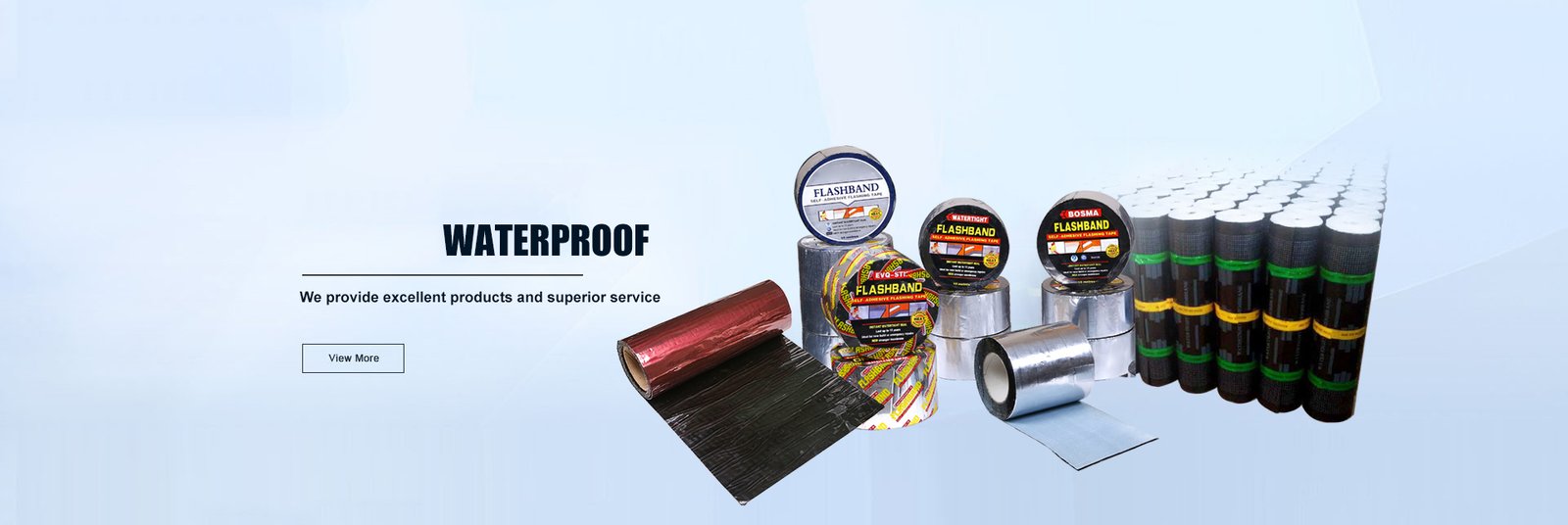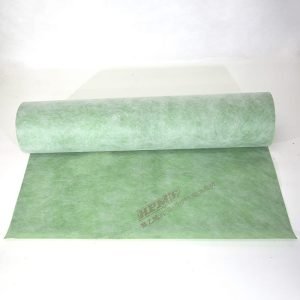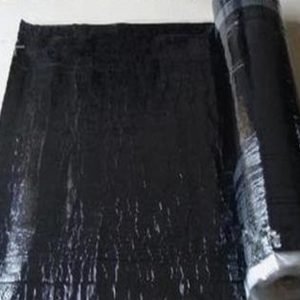
PRM-C Elastomer Modified Asphalt Chemical Root Puncture Resistant Waterproof Membrane
PRM-C Elastomer Modified Asphalt Chemical Root Puncture Resistant Waterproof Membrane
product description:
Polymer-modified asphalt root puncture-resistant waterproof membrane is based on long-fiber polyester fiber felt, special composite copper base or copper foil base, and is coated with imported chemical root inhibitor SBS modified asphalt Material, modified asphalt membrane made of polyethylene film, fine sand or mineral granules as isolation material on both sides.
Variety specification:
Class: Type II
Width: 1000mm; 2000mm
Thickness: 4.0mm
The modified asphalt waterproof membrane with chemical root inhibitor is suitable for planting roofs, roof gardens, garage roofs, and underground building roofs that require greening.
Features
It has dual functions of waterproofing and preventing plant roots from penetrating, can withstand the puncture of plant roots, and maintains waterproof function for a long time;
It not only prevents root puncture but also does not affect the normal growth of plants;
Can form a high-strength waterproof layer, strong resistance to pressure water, and resistance to root puncture, cracking, tearing, and fatigue;
High tensile strength, large thickness of modified asphalt coating, strong adaptability to base shrinkage deformation and cracking;
Excellent high and low-temperature resistance, suitable for both hot and cold regions;
Corrosion resistance, mildew resistance, good weather resistance;
Hot-melt construction, convenient construction, and reliable and durable thermal seams.
Main application: It is suitable for the puncture-resistant layer of plant root system on the roof of the roof and the roof of the underground building that needs greening, to ensure that the plant root system will not damage the structure below the layer, and has a waterproof function.
System structure level and structure points
The planting system generally consists of a vegetation layer, planting soil, filter aquifer, drainage layer, protective layer, polymer modified asphalt root puncture resistant waterproof layer, ordinary SBS modified asphalt waterproof layer, leveling layer, insulation layer, slope making layer, Structural panels and other layers.
Structural plate
Must be cast-in-place reinforced concrete. When the roof slope is greater than 15%, anti-slip measures should be taken for the waterproof layer, drainage layer, and planting soil layer. When the roof slope is greater than 50%, it is not suitable for planting.
slope layer
The slope of the roof should be 2%. When the slope length is less than 4m, cement mortar can be used to find the slope; when the slope length is 4-9m, the slope-finding material can be aerated concrete, lightweight ceramsite concrete, expanded perlite cement mortar, or vermiculite cement mortar, etc.; when the slope is long If it is greater than 9m, structural slope finding shall be adopted.
Insulation
It is advisable to use polystyrene foam board, polyethylene foam board, and on-site spraying of rigid foamed polyurethane as the insulation layer. If the thickness of the planting soil is greater than 800mm, no insulation layer is required. For leveling layer, a cement mortar leveling layer with a thickness of 20mm-25mm can be laid with 1:2.5 cement mortar.
Screed
Grid joints with a spacing of not more than 6m shall be reserved.
Ordinary SBS-modified bitumen waterproof layer
It is advisable to use a 4mm or 5mm modified asphalt waterproofing membrane for a waterproofing treatment and hot-melt construction.
Polymer-modified asphalt root puncture-resistant waterproof layer
4mm or 5mm modified asphalt root puncture-resistant waterproofing membrane should be selected, which has both root-blocking and waterproof functions, and hot-melt construction.
The protective layer
200g/m2 polyester non-woven fabric can be used, and the empty laying method can be used for construction, with a lap width of 200mm.
drainage layer
Plastic drainage boards with a concave-convex height of 8-20mm can be used, and the empty laying method can be used for construction, and the lap width should not be less than 150mm. Lightweight ceramsite or pebbles with a particle size of less than 25mm can also be used as a drainage layer with a thickness of 80-100mm. Drainage layers may not be provided in dry and rainless areas (total annual precipitation less than 400mm); when the thickness of planting soil is less than 150mm or greater than 1500mm, no drainage layer shall be provided. A drainage board with a water storage function can also be selected, on which only one layer of filtration is required.
Filtration, Aquifer
Chemical fiber felts and mineral wool pads with a density greater than 400g/m2 can be used, laid empty on the drainage layer, with a lap width of 100mm, and the seams should be sewn with thread. When the thickness of the planting soil is greater than 500mm, there is sufficient water storage capacity, so there is no need to set up an aquifer, and 200g/m2 polyester non-woven fabric can be used as a filter layer.
planting soil
The improved soil or compound planting soil should be used for roof planting, and pastoral soil should be used for basement roof planting. The thickness of the planting soil is determined according to the type of plant.
Key points of waterproof construction:
Base treatment:
The waterproof base must be cleaned to ensure firmness, dryness, and flatness;
If there is any unevenness on the construction surface, it should be repaired or smoothed, and the corners and inner corners should also be rounded in advance;
Apply the base treatment agent completely on all construction surfaces and let it dry completely.
Additional waterproof layer for node details
For general details such as yin and yang corners on three sides, gutters, gutters, deformation joints, and other parts, an additional layer of special coils shall be pasted according to relevant specifications.
Ordinary waterproof layer construction
Hot-melt construction The root-blocking waterproof layer construction is hot-melt construction, and the construction method is the same as that of an ordinary modified bitumen waterproof membrane.
construction technology
Cold bonding method construction:
Apply a layer of petroleum series base treatment agent (cold base oil) evenly on the base.
After the base treatment agent is dry, the adhesive (neoprene adhesive or SBS adhesive) can be applied, and it should be applied evenly at one time.
After placing the modified coiled material in the predetermined position, start paving, leave a 10cm lap seam in the vertical and horizontal directions, stick it flat with an adhesive, and compact it with a pressure roller after drying for a few minutes.
If the project requires double-layer waterproofing, the longitudinal joints of the second layer must be staggered by at least one-third of the first layer, and the horizontal joints must be staggered by more than 1 meter.
Hot melt construction:
Brushing base treatment agent (same as cold construction method)
Put the coiled material at the predetermined position, and heat the base layer and the bottom surface of the coiled material with liquefied gas or gas oil torch, after the surface asphalt melts a thin layer, roll the coiled material forward while baking, and compact it with a pressure roller, pay attention to adjusting the flame The size of the melted asphalt on the surface of the coil should not flow too much, let alone be baked through.
The overlap of the coils is 10cm vertically and horizontally, and the sealing is baked with a blowtorch.
Double-layer waterproof, the seams of the membrane must be staggered according to regulations.
The hot-melt construction method should not be used when the thickness of the coil is less than 3mm or the cladding material is aluminum film.
Precautions:
The waterproof base surface (leveling layer) must be hard, flat, dry (moisture content should not be greater than 10%), and clean, and there should be no anti-sand and various sharp objects.
If there is snow, water, and frost on the base surface of the operation, construction is not allowed.
The coiled material is not suitable for construction under negative temperature conditions. If it is constructed under negative temperature conditions, measures should be taken to ensure that the waterproof layer after laying is free from cracks and poor bonding.
When laying the coiled material, you should always squeeze the air out by hand to avoid bulges.
When handling the coiled material, it should be handled lightly, and it should not be dropped to avoid damage.
Construction is not allowed on rainy days, snowy days, and strong winds above grade five.
The construction process adopts fusion lap joints, and the occurrence of over-fire and under-fire should be avoided. It is advisable to melt the oil out of the lap joints, and the width of the oil out is 5-10mm.
The safety protection facilities for the construction site and personnel are complete, and the fire-fighting equipment is effective and placed in accordance with regulations.





